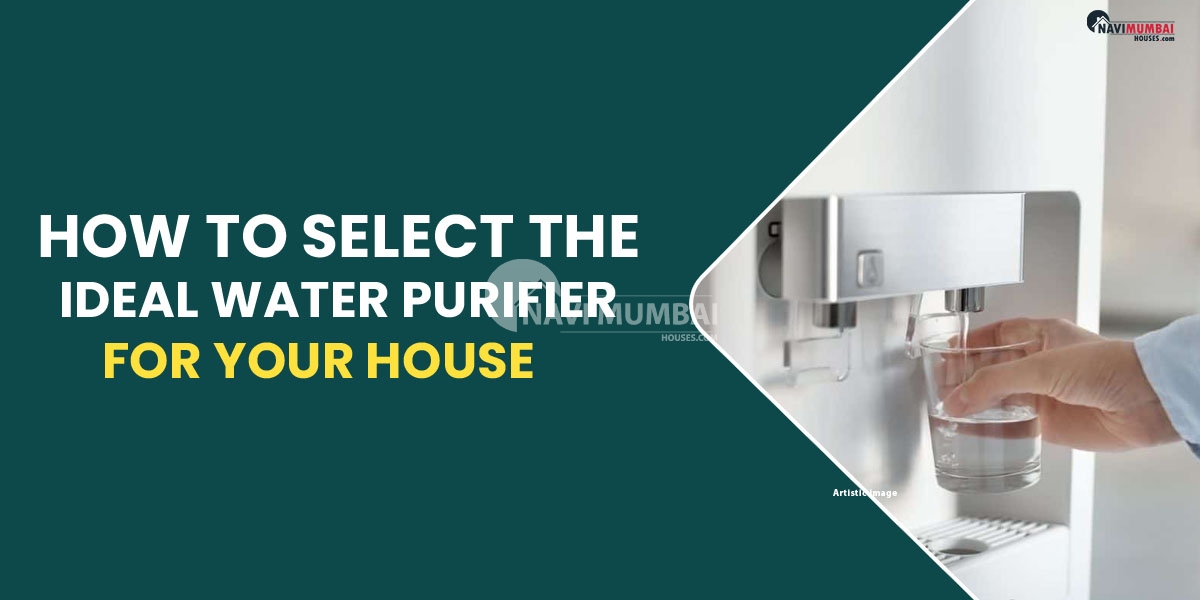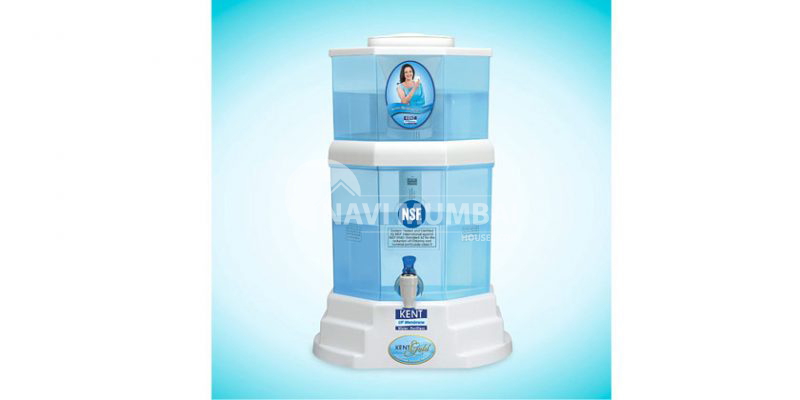
- January 12, 2023
- Decor
How To Select The Ideal Water Purifier For Your House
For a constant supply of hygienic and secure drinking water, every family requires a water filter. Everyone has the right to get pure water for drinking. Even if they have access to water, many people are unable to utilise it for drinking or other reasons since some areas are experiencing a natural or induced crisis that renders the water unfit. A water filtration system saves us at that point. The water is made safe for consumption using a water purifier. This detailed guide will assist you in selecting the best water purifier for your home among the many options available.
Are you searching flats for sale in kanjurmarg?
Why does your home need a water purifier?
There are very few sources of clean water. Every region faces unique difficulties in obtaining safe drinking water. Before purchasing a water filter for your home, consider the hardness, TDS, and salinity of the water.
Small organic particles known as total dissolved solids (TDS) are found in natural water. TDS levels below 200 ppm are regarded as safe and suitable for drinking water. River, collected rainwater, and lake water often have lower TDS levels and are safe. However, bore wells & groundwater have high TDS values and can have contaminants like arsenic or lead that can be fatal. This makes having a functioning and efficient water purifier in every home essential.
How do you pick the ideal water purifier for your house?
It might be difficult to choose a purifier that is efficient and fits your home’s space with the wide variety of brands and models on the market. Here are a few things to think about while deciding to make a sensible choice.
Tank’s storage capacity
An individual can use up to 2-4 litres of water every day on average. Determine how much filtered water you need per day by multiplying the number of people in your family. For regular use, get a purifier with a sizable tank capacity.
Material used in the storage tanks
The storage tank of a water purifier is typically constructed of sturdy, food-grade polyethylene. But with time, it turns into a haven for pathogens and dangerous bacteria, tainting the water that has been preserved. In recent times, businesses have begun producing the storage tanks for water purifiers out of stainless steel. These steel-made tanks are more resilient and prevent the growth of microorganisms. However, a stainless steel tank is significantly more expensive than a plastic one.
Adjustable water temperature facility
A water purifier with the ability to supply both hot & cold water would be the ideal addition to your home if you have extra money to spend on it. Wintertime uses for hot water include bathing and washing produce and veg. But because they are so expensive, these devices are typically only seen at expensive facilities.
Cost of maintenance and warranty
Typically, purifiers have up to a six-month warranty on their filters and a one-year warranty on their UF+RO membrane and outside body. Many brands provide Annual Maintenance Contracts (AMC) for 1-3 years, which include labour and material fees for changing filters, membranes, and parts. The upkeep of RO and RO+UV filters is expensive. In contrast, gravity filters are less expensive. Therefore, before making a purchase, thoroughly study the purifier’s AMC and warranty.
Check the size again
Once you have discovered the purifier that is ideal for your home, be sure to find out about its dimensions (depth, height & length). You must make sure there is enough space to put your chosen purifier next to an appropriate water pipeline because homes have a specific design with places designated for various instruments and furniture. Don’t forget to create a buffer zone around the purifier so that it can still be serviced when necessary.
The best water purifier options available
As previously said, there are plenty of options available when looking to purchase the best water purifier for a home. Here are some of the top choices you have.
Reverse osmosis purifier Kent Copper Compact R.O.
The osmosis process, in which water ordinarily moves from an area with a low TDS level to an area with a high TDS level, is altered by reverse osmosis. Using external pressure, a water pump can alter the direction of flowing water. Concentrated water with a high TDS content is poured into the RO chamber. Clean water goes through the semi-permeable barrier while the contaminants are trapped there. The contaminants are released through another outlet.

They need electricity all the time to function. R.O. purifiers produce approximately twice as much effluent as they do filtered water. The market leader in this category is Kent’s R.O. purifier. The copper panels that come with this purifier have a large storage capacity and can reduce the TDS levels in the water by up to 3000 ppm.
Ultrafiltration Kent Gold Star Water Filter
Compared to R.O. purifiers, Ultrafiltration water purifiers’ membranes feature substantially wider pores (0.01 microns) (0.0001 microns). The fact that it also functions without electricity is its main benefit. Gravity assists in dragging the water across without the use of power because the membranes’ bigger pores. As a result, no additional water pump is needed.

Additionally, less water is wasted. However, they are less effective at removing TDS or hard water from water. The 22-liter storage capacity and 4000-liter filter life of a Kent Gold Star U.F. filter, respectively.
Ultraviolet (UV) purifier HUL Pure it Copper
High-powered UV light beams are used by ultraviolet water purifiers to eliminate bacteria and viruses in dirty water. However, activated carbon filters & sediment filters must be fitted in order to remove the dissolved & undisclosed pollutants. They work best in locations with low TDS levels in the water.

The HUL Pure it Copper UV purifier is extremely robust despite its simple design. You have the choice of drinking water that contains or doesn’t include copper. When the filter has to be changed, the machine alerts you 15 days in advance. 1.6 litres of water are purified every minute.
Gravity-based/tap-mounted Kent Gold filter
These are the most basic types of water filters used for first-level filtration. Filters that can be put in taps are compact and simple to install. Large undissolved pollutants are removed using activated carbon filters. Gravity-based filters, in contrast, are longer and include separate storage tanks for polluted and pure water.
Only areas with low TDS levels and low levels of pollution can use these purifiers. The top gravity-based water filter on the market is the Kent Gold model. It is ideal for a big family because it has a 20L storage capacity.
Conclusion
In conclusion, choose RO purifiers if you reside somewhere where the TDS level in the water is over 500 ppm. Even when the water has low TDS levels, R.O. purifiers are the best option when it is contaminated with dangerous elements like lead and mercury. Choose UF+UV filters for soft water & minimal biological pollution. Choose RO+UV+UF water purifiers in locations with hard water and severe biological contamination. If your space does not permit electric filters, gravity-based filters will function.
You’re looking for Projects in Andheri we have the Best Properties In Mumbai Like Ready to Move:https://navimumbaihouses.com/properties/search/andheri-/
If you want daily property update details please follow us on Facebook Page / YouTube Channel / Twitter








